
image credit: africasahara.com
Khat: History, Sale, Use, Effects, Legality and More
Other Known Names: Jimmaa (Oromo Language), Kenyen Khat, Kenyan Khat, Mira (Kenya/Uganda), Miraa (Kenya/Uganda), Muhulo (Kenya), Muirungi (Kenya), Mayirungi (Luganda Language), Chat (Amharic Language), Qat (Yemen), Gat (Yemen/Israel), Ghat (Yemen/Israel), Qaat (Somalia), Jaad (Somalia), Qaad (Somalia), Jat (Somalia), Abyssinian Tea, Arabian Tea, Bushman’s Tea (South Africa), Somali Tea, القات (Arabic), Flower of Paradise, Leaf of Allah, Chat Tree, Kafta, Cat, Cathine, Catha Edulis Forsk, Cathaedulis
Other Known Spellings: Khot, Kaht, Kat, Kot, Qat, Quat, Caat
Khat’s Scientific/Binomial Name: Catha Edulis (a flowering evergreen shrub)
Khat's Scientific Family Name: Celastraceae
Khat’s Classification: Kingdom - Plantae, Clade - Angiosperms/Eudicots/Rosids, Order - Celastrales, Family - Celastraceae, Genus - Catha, Species - Catha Edulis)
Active Content that Causes Effects: Alkaloids called Cathinone and Cathine (mild stimulants), Nor Pseudoephedrine
Main Subjective Effects: Wakefulness, Alertness, Euphoria, Improved Intellectual Efficiency
Addictiveness: Non Addictive (over use can cause symptoms of amphetamine psychosis)
Synthetic Equivalent: Phenylpropanolamine (diet drug similar to khat's cathinone)
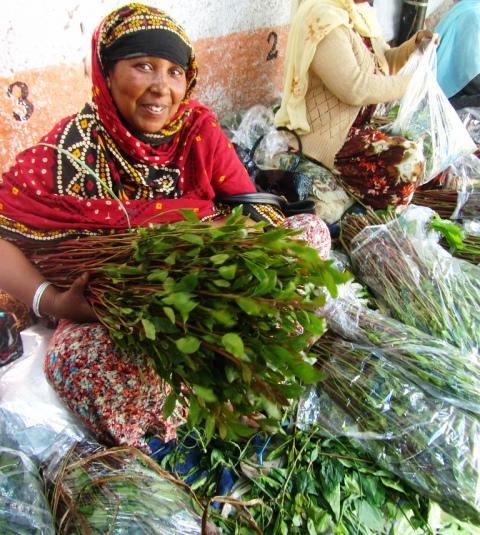
Khat in Ethiopia - Background
The lethargy of the sunny and hot late morning is replaced by a heart thumping excitement. The arrival of noon indicates that the day’s “bercha” is approaching.
Offices and shops are closed in a rush. A mad dash is made for all the eating places in the city.
The restaurants, cafés, roadside eateries are all jam packed with excited groups of friends stuffing themselves with “habish” (favorite dish of the Harari people), pasta, Ethiopian wot, etc.
The next destination that experiences an upsurge in the attendance of the local populace is the khat or chat market.
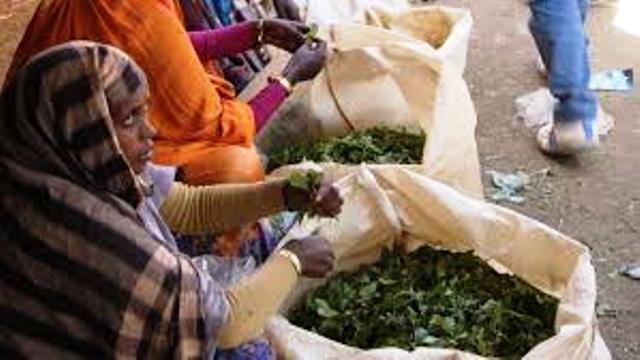
These markets are strategically located throughout the city as to not impose an inconvenience for their eager customers.
The price of this eagerly sought product inevitably increases accordingly as the market’s proximity edges closer towards the city center.

The market itself boasts pretty young ladies, wizened old women, and chatty saleswoman with their valuable produce in front of them in bundles.
Surrounding these woman are groups of loyal customers who call their favorite hawker their “mammila”.

The mood throughout the market is one of frenzied excitement, jubilation, and an undercurrent of anticipation for what is to come.
Friends greet friends as rumors are passed along, so as to provide a source of conversation for the “bercha” to come, all this amid all the buying, selling and unavoidable price negotiations.
With freshly bought bundles under their arms, the excited purchaser looks like a victorious soldier gingerly holding on to his firearm.
The next step is the all important choosing of locations: a very protracted thought process is activated as the individual contemplates where he/she shall spend the next few hours.
Friends or groups of friends called “jemma” are thought of, old friends are remembered, family is considered, and work companions are also on the list of potential candidates for the upcoming “bercha”.

Even the actual abodes, their comfort levels, the hospitable nature of the hosts, the distance of the neighborhoods are all put into the equation, so as to not ruin the impending “merkana” or high.
Often times the individual’s home plays host to “berchas”, but today another location is opted for.
Now begins the journey, usually in a “bajaj” or "tuktuk” a tiny taxi that looks like it was made just for you to travel in.

Along the way, the individual notices toothless old men with pestles grinding the leaves, indignantly showing the world of men with teeth, that they too can “mekam” or chew and partake in their beloved “bercha”.
The chauffer understands your urgency as he also has his own “bercha” plans, so he is willing to make stops along the way for the purchase of the accessories that accompany the bundle of joy lovingly held under their arms.
Peanuts, cigarettes, soft drinks, shisha tobacco, incense, sambussas, baklavas, are among the trimmings necessary for a “fua” or perfect “bercha”.
The city is Harar and “bercha” is an age old tradition of a gathering of people for the purpose of chewing khat or chat.
History of Khat
Many experts are in agreement that the origins of khat began in Ethiopia, with its cultivation slowly spreading throughout East Africa and the Arabian Peninsula (Yemen).
The famous explorer Sir Richard Burton reported that it was his belief that khat was spread to Yemen from eastern Ethiopia, namely from the historically significant city of Harar.
He goes on to claim that Harar is the actual birthplace of the plant.
Chewing khat is a cultural and sometimes religious tradition that has been passed down from ancient times.
It even goes back further than the act of drinking coffee, which was also originally cultivated in East Africa.
It is believed that thousands of years ago, ancient Egyptians believing in its divine properties used the khat plant to create a state of mind that helped the user realize his divinity.
 image credit: unc.edu
image credit: unc.edu
Royal cults in Ancient Egypt used the plant ceremoniously to generate metaphysical, mystical and systemic trance like experiences.
The Muslim religion does not allow its adherents to use drugs and alcohol, as they are seen to be harmful to the body and mind.
Muslims are known to refer to khat as the “flower of paradise” and there are some members of Sufi Islam that continue their tradition of using khat in religious ceremonies.
This they believe enables them to communicate at a more personal level with their God.
Khat is not banned by Islam and throughout history, the attempt to make this unique plant illegal was spearheaded by occupying colonial governments, namely the English and Italians.
By the year 1921, the British colonial government in Somalia outlawed and banned the use and cultivation of khat.
But this only led to a huge increase in smuggled khat from Ethiopia, and traditionally non users in the south of Somalia began to take up the activity as a protest against the British colonial powers.
Interestingly enough, the legal and illegal importation of khat from Ethiopia continues to this day, with roughly all Somali males being habitual users.
Throughout the centuries, many authors have mentioned this historic plant in their writings.
The oldest document to have mentioned khat is the 11 century pharmacological work called Kitab al-Saidala fi al-Tibb which was authored by a Persian scientist/biologist named Abu Rayhan al-biruni.
In it he states:
It is sour to taste and slenderly made in the manner of batan-alu. But khat is reddish with a slight blackish tinge. It is believed that batan-alu is red, coolant, relieves biliousness, and is a refrigerant for the stomach and the liver.
Another author was Charles Dickens, who in 1856 wrote:
The leaves of the drug called kat are the chief source of pleasurable excitement in these districts of East Africa…It is much used by the Arabs, to whom it is sent in camel loads, consisting of a number of small parcels, each containing about forty slender twigs, with the leaves attached, carefully, wrapped so as to avoid exposure to the air. These leaves are chewed and act upon the spirits of those using them, much as a strong dose of green tea acts upon us in Europe.
Historically, khat was not widespread as it is today. The shrubs now grow naturally in places as far as South Africa, Swaziland, and Mozambique. This is in addition to its original home in Ethiopia, Kenya, and Yemen.
What Exactly Khat Is
Khat is a flowering evergreen shrub that is used as an herbal stimulant.
It is a mildly narcotic plant that grows with ease into a small tree or a large shrub in locations that are sub-tropical.
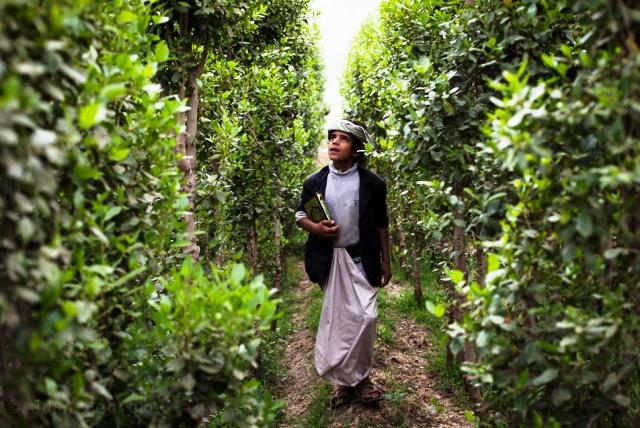
Catha edulis (scientific name) or khat contains three active principles called norpseudoephedrine, cathinone and cathine.
Khat is odd in that it goes through a chemical transformation as it deteriorates 48 hours after being harvested from the field.
The fresher the plant corresponds to how crucial its psychoactive chemicals affect the user.
Its deterioration involves the primary stimulant cathinone breaking down into a weaker alkaloid called cathine.
It took chemists till 1970 to discover cathinone due to the short 48 hour window they had to analyze the khat plant, labeling it as a mysterious plant.
Users generally chew the younger stems and leaves because they have higher concentrations of the potent cathinone component, while the older leaves and stems have more of the milder cathine component.

image credit: open.edu
It is primarily due to this that harvesters package the plant in plastic bags, banana leaves, refrigerated containers, etc, in order to reduce the loss of moisture and the crucial cathnione component.
Sprinkling with water is also a common technique of the transporters of khat.
How to Grow Khat
Khat farmers in its native regions do not grow the plants using seeds; they use methods that ensure only the plants of high quality specimens survive.
Although, anyone who has the intention to grow khat, may do so using seeds.
In its original sub-tropical locale of Ethiopia and Yemen, khat grows very easily into small sized trees or large shrubs.
Khat, is adaptable to diverse types of soils and environmental conditions, with reports of it also surviving in temperatures as low as 25 degrees Fahrenheit.
But Catha edulis shows its true colors in full sun without shade for coastal conditions and a light shade for an inland location.

The soil it loves is a well drained sandy soil that is rich and moist with accompanying temperatures of 78 to 92 degrees Fahrenheit or 26 to 34 degrees.
With these characteristics, khat can grow anywhere in the tropical and sub-tropical realm, including greenhouses and even on hill sides at elevations of 5000-6000’ with a constant temperature of 80 degrees Fahrenheit.
For germination, one must place the seed close to the surface of a well drained soil, while making sure it is damp.
Khat grows very slowly within its first year, but in less than 2 weeks, the seeds will begin to grow.
By the end of year one, the plant should be about one foot high.
The khat plant really starts to take off after its slow growing first year and require constant feeding, fertilization, and care.
Trimming the plant and never allowing the soil to go waterless completely causes incremental increases in stem and leaf creation.
Within the gap of 3 to 4 years one would expect to have a small tree sized plant, which can be harvested but optimally after the plant has flowered and matured (4 to 5 years).
Aside from its need for water and sun, the plant grows very well with little maintenance.
Farmers often use generators to pump water from deep underground wells to water the plants, heavy watering about a month before harvesting often leads to a tender and moist product.
Harvesting about 4 times a year for a healthy khat plant is normal and this is very attractive to the often cash strapped farmers.
Depending on the variety of khat, its potency can be measured by the prevalence of red on the veins and stems of the leaves.
Known countries khat is grown in are the following: Ethiopia, Kenya, Uganda, Yemen, and some parts of Southern Africa.
The best quality khat is sold in Awudai or Awuday, in the eastern part of Ethiopia.
The plant is grown in the environs surrounding the city of Awudai, namely Kombolcha among others.
How To Use Khat
Usually, chewing chat is done in a 2 to 4 hour sitting and the individual will begin to feel its effects within 30 minutes of beginning.

image credit: lobtrap.wordpress.com
Depending on the type, quality, and method of use; the high from khat could last anywhere from 5 to 15 hours.
In order to mitigate its sleepless or insomniac effects, the user might be influenced to partake of alcoholic beverages.
The most common way to use khat is to simply tear off the fresh green leaves and place them in the inside of the cheek until a ball is formed.
The user would then chew up the tender, young leaves and stems while swallowing the juice.
This system is very similar to the act of chewing tobacco.

If older and lower quality leaves are chewed then the taste borders on a very harsh and acerbic flavor.
In order to make khat easier to chew, some people chew it with sugar, chewing gum, or roasted peanuts.
Other methods with less potency are to dry the leaves (usually sundried) and grind them to make tea.
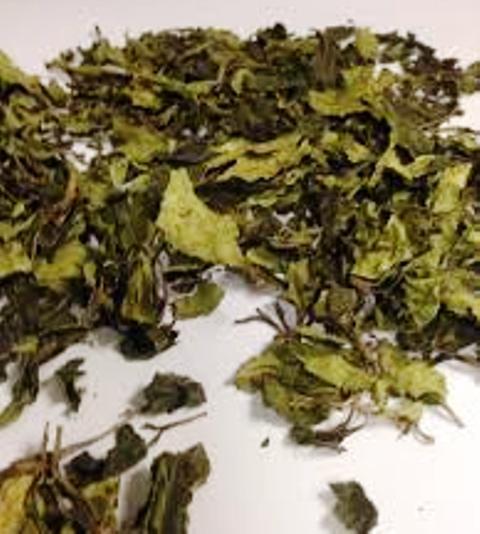
Furthermore, drying and sprinkling on food or smoking the dried ground leaves are additional techniques used.
Just recently, there have been attempts to make khat into a wine, while still retaining some of its stimulating properties.
Some enterprising individuals are also mastering the art of transforming khat into a powder form, in order to make them into easily ingestible pills.
Endeavors such as these are still in their infancy and are far from replacing the actual chewing of the fresh green leaves.
Effects of Khat
The overall effects of khat are sometimes compared with strong coffee, amphetamines and cocaine.

image credit: channel4.com
Aside from its religious use as a method of generating a trance like state of mind, khat is commonly used as a social tool.
Khat has also been known to deal with obesity, depression, fatigue, stomach ulcers, and more.
The immediate effects of khat include the following:
Increased concentration, hyperactivity, mild euphoria, thought disorder, excitement, talkativeness, alertness, elation, increased skill at associating ideas, better imagination, arousal, constipation, friendliness, increased blood pressure, insomnia, psychosis, hyperthermia (increased body temperature) and loss of appetite.
The long term effects of khat use include the following:
Addiction, depression, and sporadic hallucinations.
Health Risks of Khat
In 2013, the U.K. Advisory Council on the Misuse of Drugs claimed that there was "insufficient evidence" to support that khat causes any serious health effects.
While researches on the detrimental effects of khat are thin some evidence might point to valid arguments.
It has not yet been proven but deep suspicions point toward Cathinone, the active ingredient of khat.
Others argue that the unsafe conditions of the product and the places where the product is used are the main contributors of the detrimental effects.

image credit: wardheernews.com
It is common for users of khat to not wash the plant before use, claiming it will decrease its potency.
Harmful chemicals and pesticides that the farmers inevitably use are then passed on to the user.
Places where users congregate are also usually poorly ventilated with second hand smoke causing noxious fumes for the user.
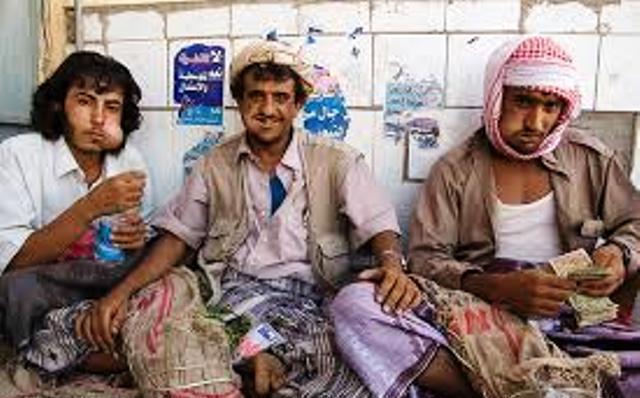
The overuse of khat is associated with the following health risks:
Liver toxicity, dependency (addiction), insomnia, constantly disrupted sleep, worsening of pre-existing mental health problems, high blood pressure, gingivitis, heart palpitations, tooth loss, esophageal cancer, dental disease, oral cancer, appetite loss, anorexia, and gastric disorders.
Although, widely believed to be a relatively safe drug, some deaths have been associated with it.
War on Sale of Khat
Khat is currently legal in Ethiopia, Kenya, Djibouti, Somalia, Yemen, Uganda, Israel, and countries in South America.
Due to economic and political reasons there are countless migrants from the horn of Africa spread out across the globe.
They have inevitably brought with them their various cultural beliefs and practices, one of them being the use of khat.
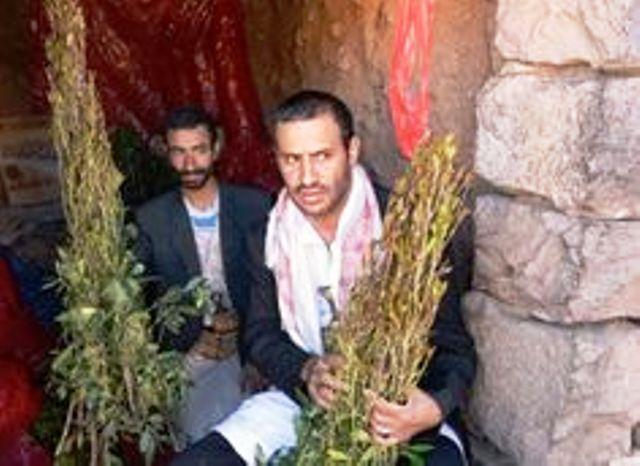
image credit: greenprophet.com
The problem is that ever since the WHO or World Health Organization declared the herb as a drug of abuse in 1980, like a domino effect, almost every country in the world has outlawed the sale of khat, as well as its use.
The American DEA or Drug Enforcement Administration placed cathinone the main component of khat on the Controlled Substances Act, officially making khat an illegal substance in the United States.
This eventually led to almost every country in Europe with the United Kingdom being an exception, but they too finally banned khat in 2014.
With all this widespread banning, one would expect the use of khat to slow or regress but the opposite is being witnessed.
History seems to be repeating itself, just as in the case of the British colonial powers in Somalia outlawing khat led to an increase in its use.
Today, khat is considered to be a highly lucrative cash crop for farmers across the horn of Africa and the Arabian Peninsula.
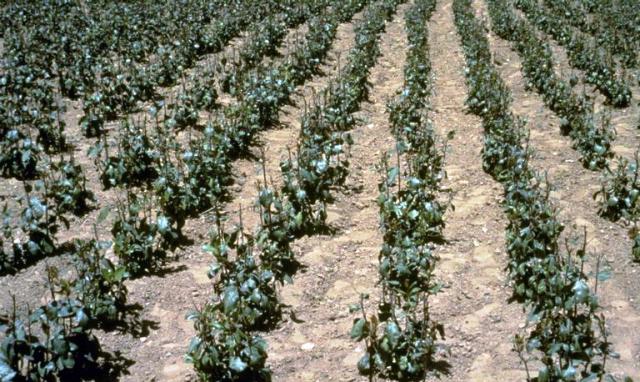
The prohibition of their product has not led to a decrease in its use but has instead driven up the international price.
It was reported that up to 1.2 million acres of land is used for the cultivation of khat, three times its size just 20 years ago.
The high prices caused by worldwide banning and unavailability of land are reasons cited by the farmers.
Khat has transformed into multi-million dollar industry providing countries such as Ethiopia and Yemen with huge much needed cash flows.
Khat was reported to account for 30% of Yemen’s economy in 2000 but now the increase could be astronomical.
With all this money to be had in the khat business, it is inevitable that smugglers and dealers will only continue to flourish and find innovative ways for trading their products.

image credit: thanhniennews.com
In fact, Theresa May, the then British Home Secretary admitted to making khat illegal to help thwart smugglers, claiming that “failure to take decisive action and change the U.K.’s legislative position on khat would place the U.K. at a serious risk of becoming a single, regional hub for the illegal onward trafficking.”

According to data from an American DEA or Drug Enforcement Administration report on west coast drug seizures in 2013, there were two large seizures with the remainder 60 being smaller busts.
The two large shipments were a whopping 8 metric tons each, while the smaller shipments were between 10 to 50 kilos.
They were almost all reportedly seized during a routine “mail inspection”.
It is interesting to note that most of the federal authorities in the United States are somewhat hesitant in pursuing cases against khat.
The reasons are two-fold: one being the drugs ability to deteriorate within 48 hours changing its illegal status significantly, it lowers its from a Class B drug to a not so serious yet still illegal Class C drug.
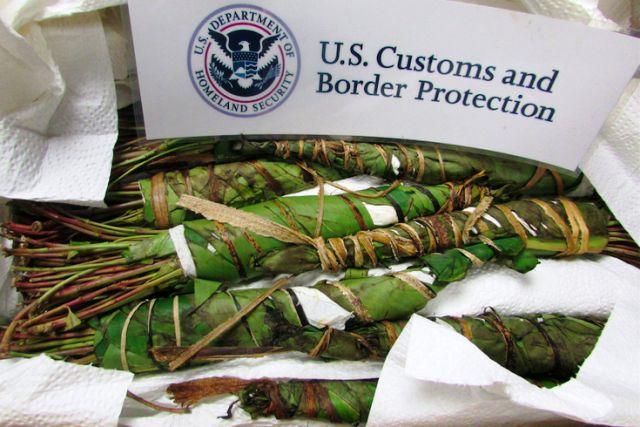
image credit: phillyvoice.com
The second reason is that it appears that they are racial profiling when pursuing khat cases because of its cultural significance, when prosecuting migrants from communities that use khat, it appears that there is a deliberate targeting involved.

image credit: scmp.com — 5 tons of khat seized in Hong Kong

image credit: thestandard.com

image credit: timesofoman.com — Thousands of packs siezed in Oman
More Resources on Khat
-Kevin Rushby, Eating the Flowers of Paradise
-Abdulle, Sahal, "Somali Islamists are gone – so 'khat' is back!". Reuters. Mogadishu.
-Al Zarouni, Yousif, The Effects of Khat (Catha Edulis). London
-Anderson, David; Beckerleg, Susan; Hailu, Degol; Klein, Axel, The Khat Controversy: Stimulating the Debate on Drugs.
-Beckerleg, Susan, Ethnic Identity and Development: Khat and Social Change in Africa. New York: Palgrave Macmillan US.
-Carrier, Neil C. M., Kenyan Khat: The Social Life of a Stimulant. Leiden: BRILL.
-Gatter, Peer, Politics of Qat: The Role of a Drug in Ruling Yemen. Wiesbaden: Ludwig Reichert Verlag.
-Gebissa, Ezekiel, Leaf of Allah: Khat & Agricultural Transformation in Harerge, Ethiopia 1875-1991. Athens, Ohio: Ohio University Press.
-Gebissa, Ezekiel, Taking the Place of Food: Khat in Ethiopia. Trenton: Red Sea Press.
-Gezon, Lisa, Drug Effects: Khat in Biocultural and Socioeconomic Perspective. Walnut Creek: Left Coast Press.
-Hilton-Taylor, "Catha edulis". IUCN Red List of Threatened Species. Version 2006. International Union for Conservation of Nature.
-Pendell, Dale, Pharmakodynamis: Stimulating Plants, Potions and Herbcraft: Excitantia and Empathogenica. San Francisco: Mercury House.
-Randrianame, Maurice; Shahandeh, B.; Szendrei, Kalman; Tongue, Archer; International Council on Alcohol and Addictions, The health and socio-economic aspects of khat use. Lausanne: The Council.
